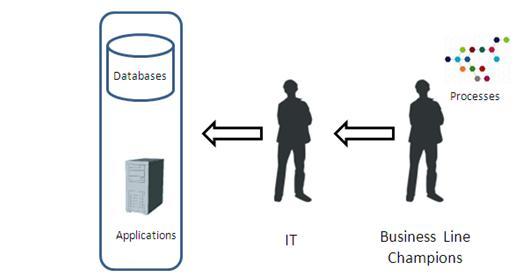I was recently reading a blog from Jim Sinur of Garnter, The Secret is Out: The Business is Building Processes and Applications. It got me thinking on this topic...
Are you having problems with accessing your emails or the internet? Is your new laptop not working like you think it should? Do you need to be granted access to your Accounting or Orders Management application? IT to the rescue! Do you need to formalize and automate a new business process inside your company? Think twice about asking for IT's help so quickly.
In many ways, we have all relied (and continue to rely) on IT to govern and control everything vital to our company's operations such as information systems, business data, and internal HR information, among many other things. Historically, IT governance provides the value of ensuring systems are safe, data is organized, and all company employees can have access to critical applications. Moreover, in a classical sense, critical business applications required the expertise of IT (as these applications were not "business user" friendly). The trade off -and there is a trade off- is that the business line champions have to guarantee IT has enough information to ensure the systems serve the true business needs of the company.

Today's business process development options obviate the need for business line champions to rely on IT in the following ways:
- Business Process modeling applications from pure-play BPM vendors are easily installed on client machines without the need for underlying databases
- Some BPM modelers are available in the cloud now requiring no installation locally
- Common applications on client machines today, like MS Visio and MS SharePoint, have basic mapping and workflow components
-
Business process conceptualization requires collaboration and discussions (many times, multiple discussions) among the business teams. IT certainly does not have time for possibly long conversations where perhaps no definitive decisions are made in those specific discussions
- IT is freed from doing what is essentially "non IT" work and can focus more on critical IT-driven tasks
- Business processes developed by business line champions more intimately represent the actual business operations

As you can see above, not only are business processes being developed now by the business line champions (for all of the above stated benefits), but also IT's work load is lightened. Is your company in a position today to allow for business line champions to take a vested and vital part of your business process development?
Related Blogs:
"Recipe" For Ideal Business Process Development: You Need Multiple Cooks in the Kitchen
Getting Started with Process Modeling
Rethink The Ways You Update Your Process Participants
Mitigate Risk by Modeling Your Business Processes
Chris Adams
VP Product Marketing and Management
Ultimus


